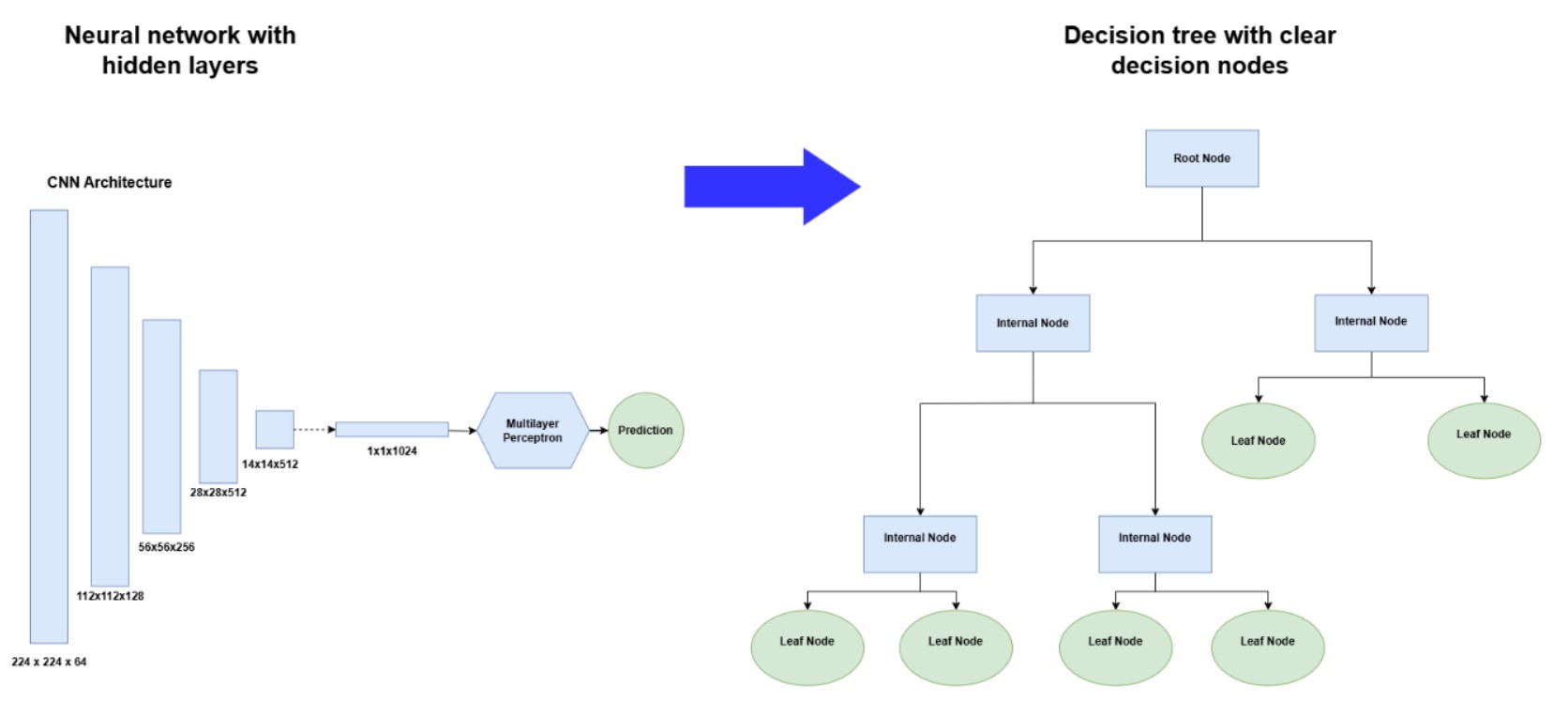Ensuring Ethical AI in Computer Vision: Addressing Bias and Fairness
As artificial intelligence (AI) becomes an integral part of modern business operations, ensuring fairness and reducing bias in image recognition systems is a growing concern. Computer vision work, which enables computers to interpret and analyse digital images, often relies on large data sets and artificial networks for decision-making. However, biased data sets can lead to inaccurate predictions, reinforcing societal inequalities and raising ethical concerns. Explainable AI is crucial in identifying and mitigating these biases, ensuring fairness in applications of computer vision across industries.
Identifying and Addressing Bias in AI Models
Bias in AI-driven image recognition can arise from multiple sources, including imbalanced training data, biased feature selection, or over-reliance on specific image characteristics. This issue is particularly problematic in fields such as recruitment, law enforcement, and medical diagnostics, where biased decisions can have severe consequences. To address these concerns, businesses can implement the following strategies:
· Diverse and Representative Data Sets: Ensuring that training data includes a wide range of demographic groups and environments helps improve fairness in AI-driven image processing.
· Bias Detection Tools: Leveraging tools such as fairness-aware machine learning algorithms and adversarial debiasing techniques can help detect and minimise unintended biases in convolutional neural networks (CNNs).
· Regular Audits and Model Retraining: Periodic audits and retraining AI models with updated, unbiased data sets ensure continuous improvement and compliance with regulatory requirements.
By integrating explainability methods such as SHAP and LIME, businesses can assess whether models make fair predictions across diverse groups, leading to more ethical AI applications in computer vision.

Another key consideration is how teams approach the design and development process itself. AI systems do not just inherit bias from data—they also reflect the decisions made by the people who build them. This means the background, assumptions, and goals of developers matter.
Teams should include people from varied cultural, professional, and social backgrounds. A mix of perspectives helps flag potential blind spots early in the process. It also encourages better questions about how systems will work in the real world.
Open conversations within development teams help surface concerns before models are deployed. Ethics reviews should be a regular part of the development cycle, not something added later. These reviews can guide choices around labelling data, setting model thresholds, and selecting evaluation metrics.
Simple steps like clearly defining the intended use of an AI system can avoid misapplication down the line. If the original goal is too vague, models can end up used in ways they were never designed for. Clear use cases keep teams focused and reduce risk.
Testing models with users before full rollout is also vital. Real feedback can catch issues missed during development. In cases where a model performs poorly for certain groups, it’s important to slow down and fix the problem before scaling up.
Speed should never come before fairness. Documentation also matters. Every model should come with clear records of how it was trained, what data was used, and what limitations it has. This helps others understand where the system might fail and what improvements are needed.
Transparency within the team leads to better results for everyone who ends up using the AI. When fairness is a core part of the development mindset, the final product is more likely to meet both business and ethical goals.
See how computer vision is transforming industries and keeping businesses ahead—learn more now!
Real-World Applications of Explainable AI in Computer Vision
The need for transparency extends across multiple sectors, where AI-driven image processing plays a critical role. Below are key industries benefiting from explainable AI in computer vision:
Healthcare and Medical Imaging
AI-powered image processing is revolutionising medical diagnostics by enabling computers to analyse X-rays, MRIs, and CT scans with high precision. However, ensuring interpretability in such applications is essential for clinical decision-making. Doctors need to understand why a model classified an image as cancerous or non-cancerous, particularly in edge cases where AI predictions may be uncertain.
By using global and local explainability methods, healthcare providers can:
· Verify that AI models correctly prioritise relevant features, such as tumor shapes and densities.
· Avoid misdiagnoses that arise from non-clinical factors, such as scanner artifacts or poor image resolution.
· Improve patient trust by offering clear, understandable explanations of AI-based decisions.
Retail and Inventory Management
Computer vision work in retail often involves inventory management, where AI automates stock tracking, detects missing items, and optimises supply chain operations. However, to maintain efficiency and accuracy, businesses must ensure that image recognition models do not misclassify products due to poor lighting, overlapping items, or reflections.
Explainable AI helps retailers:
· Understand misclassifications by analysing which visual features contributed to incorrect detections.
· Fine-tune image processing algorithms to differentiate between visually similar products.
· Reduce errors that impact stock levels, leading to more efficient supply chain management.

Another important area to consider is the setup of the physical environment. Poor lighting, cluttered shelves, and inconsistent camera angles often lead to errors in object detection.
Simple changes to how products are displayed or how cameras are placed can make a big difference. For example, setting a standard shelf layout helps the AI learn patterns faster.
Consistent camera height and angles reduce confusion during image processing. Staff should also receive clear guidelines on how to place items, especially when restocking.
When the environment stays stable, AI models perform more accurately. It also helps with long-term maintenance, as fewer changes mean fewer model updates.
Regular image checks can flag new issues before they grow. If something changes—like new packaging or a layout shift—the system should be adjusted early. These small efforts keep things running smoothly and reduce costly errors.
Security and Facial Recognition
Facial recognition technology, powered by artificial neural networks, has applications in security, law enforcement, and personal authentication. However, concerns over privacy and bias—such as misidentifying individuals from certain demographic groups—highlight the importance of transparency.
Explainable AI techniques provide insights into:
· How CNNs weigh facial features when matching identities.
· Whether AI models disproportionately fail for specific demographics.
· How regulatory requirements, such as GDPR, influence data storage and processing for facial recognition systems.

By addressing these concerns, businesses can build fair, compliant, and trustworthy AI solutions.
The Role of Data Annotation and Labeling in Explainable AI
One crucial aspect of ensuring AI explainability in computer vision is the role of data annotation and labeling. Properly labeled data sets provide the foundation for model training and interpretation. Inaccurate or inconsistent labeling can lead to unreliable AI decisions, making it difficult to generate meaningful explanations for model outputs.

Importance of High-Quality Labeling
· Improves Model Interpretability: Well-annotated data allows AI systems to generate clear justifications for predictions.
· Reduces Ambiguity in Image Recognition: Ensures that models correctly classify objects, avoiding errors caused by unclear labels.
· Enhances Regulatory Compliance: Proper labeling supports adherence to AI transparency requirements by providing traceable decision-making processes.
Using AI-assisted labeling tools, combined with human oversight, can enhance the quality of labeled data, leading to more reliable and interpretable AI systems.
Edge AI and Explainability
Another emerging trend in AI is Edge AI, where AI models process data on devices rather than in centralised cloud servers. Edge AI is commonly used in applications such as autonomous vehicles, smart surveillance, and industrial automation. However, due to the compact nature of edge models, explainability becomes even more critical.
· Interpretable Edge AI Models: Techniques like feature visualisation and simplified neural architectures help improve transparency in edge computing applications.
· Efficient Decision Logging: Maintaining records of AI-driven decisions at the edge enables audits and transparency.
· Real-Time Explanations: AI models deployed on edge devices must provide quick, human-understandable insights into their decision-making processes.
The Human-AI Collaboration in Explainability
Despite advances in explainability techniques, human oversight remains essential. AI models, no matter how interpretable, can still make incorrect predictions. Businesses should integrate human-in-the-loop (HITL) approaches to ensure that AI-driven decisions align with real-world expectations.
· Expert Validation: AI-generated insights should be reviewed by domain experts to confirm accuracy and fairness.
· User-Friendly Explanation Interfaces: Designing dashboards and visualisation tools that help end-users understand AI decisions fosters greater trust and usability.
· Continuous Feedback Loops: Users should be able to flag incorrect AI decisions, contributing to iterative model improvement.
The Future of Explainable AI in Computer Vision
The next generation of AI-driven image processing will focus on enhancing interpretability while maintaining high accuracy. Emerging trends include:
· Self-Explainable Neural Networks: Researchers are developing inherently interpretable AI architectures that eliminate the need for post-hoc explanation techniques.
· Hybrid AI Models: Combining deep learning with traditional rule-based methods to improve transparency in decision-making.
· Regulatory Adaptation: Businesses will need to continuously align with evolving AI regulations, such as the EU AI Act, to ensure compliance and ethical AI deployment.
As AI continues to evolve, ensuring explainability in computer vision will be a key differentiator for businesses aiming to build trust, enhance transparency, and maintain regulatory compliance.
Conclusion: The Path Forward for Explainable AI in Computer Vision
The journey towards fully explainable AI in computer vision is ongoing, with new advancements continually shaping the landscape. Businesses investing in transparency and ethical AI development will not only comply with regulations but also gain a competitive advantage by fostering trust among users. As AI continues to be integrated into critical industries, ensuring that models remain interpretable, unbiased, and accountable will be key to driving innovation responsibly.
Investing in explainable AI today ensures that your business remains at the forefront of ethical, reliable, and high-performance AI solutions. Contact our team at TechnoLynx to explore how we can help you implement transparent and trustworthy AI models tailored to your industry’s needs.
See how explainability can strengthen your AI strategy— get started here!
References:
-
Hertz, A. (2021) GAM: Explainable Visual Similarity and Classification via Gradient Activation Maps. arXiv preprint arXiv:2109.00951.
-
Freepik. (n.d.) Chatbot technical support artificial intelligence software flat composition with robot answering customer questions illustration. MacroVector
-
Gruosso, M., Capece, N. and Erra, U. (2020) Human segmentation in surveillance video with deep learning. Multimedia Tools and Applications, 80, pp. 1175-1199. doi:10.1007/s11042-020-09425-0.
-
Ras, G., Xie, N., van Gerven, M. and Doran, D. (2020) Explainable Deep Learning: A Field Guide for the Uninitiated. arXiv preprint arXiv:2004.14545.













